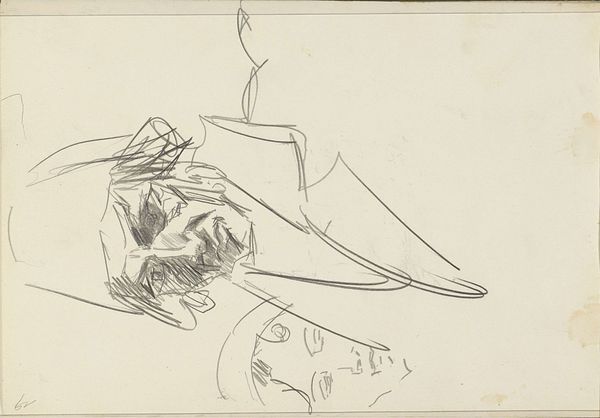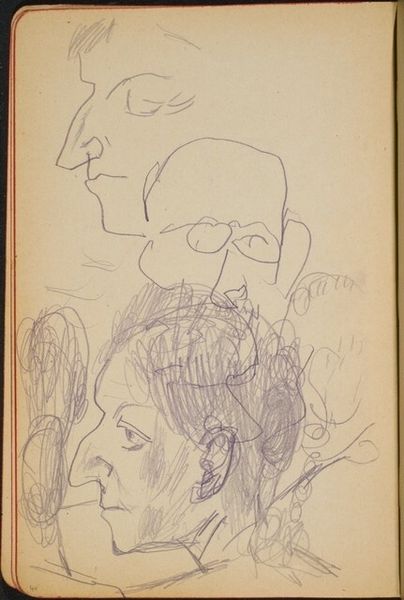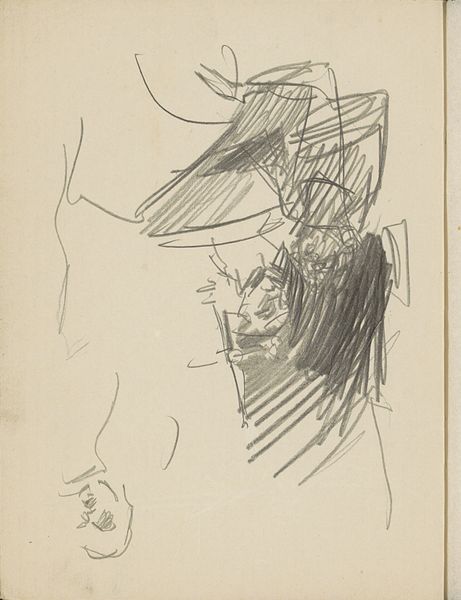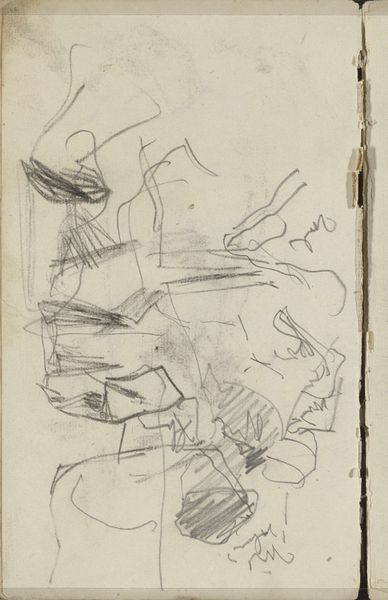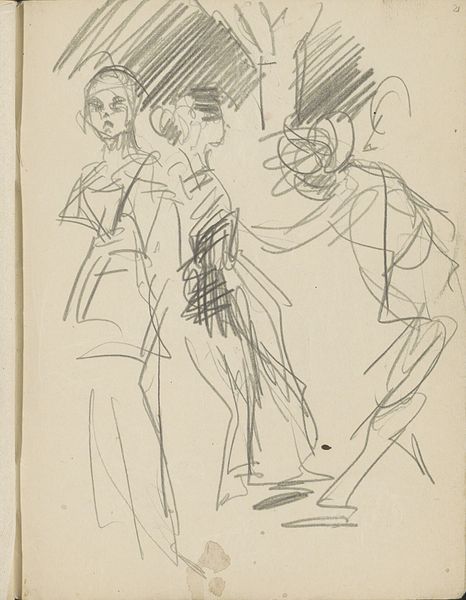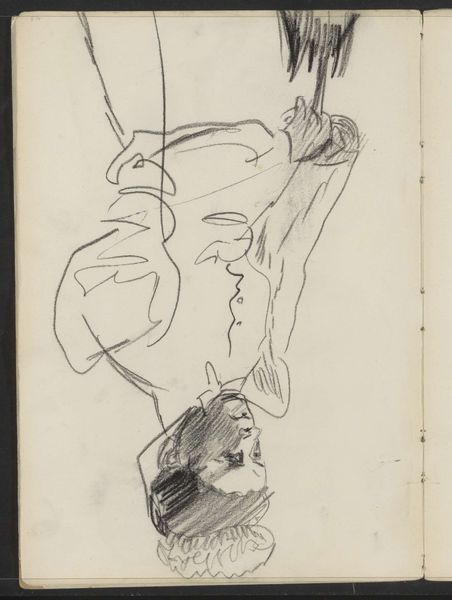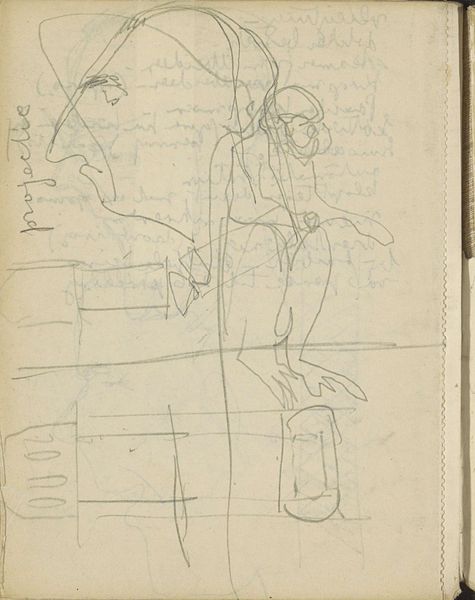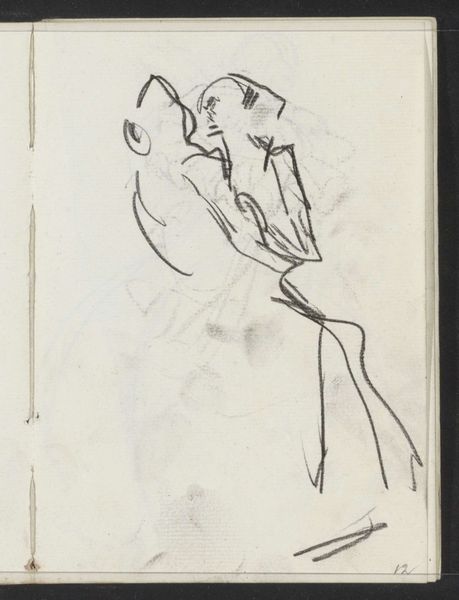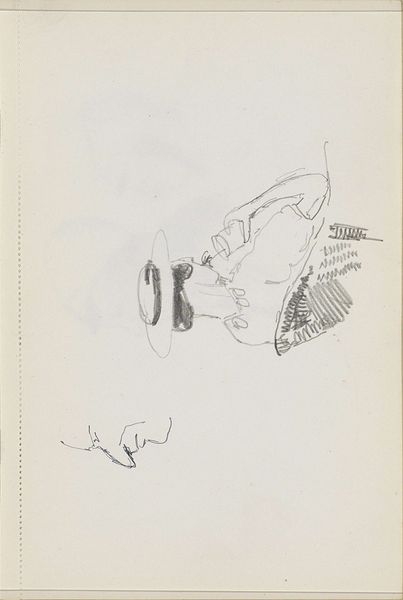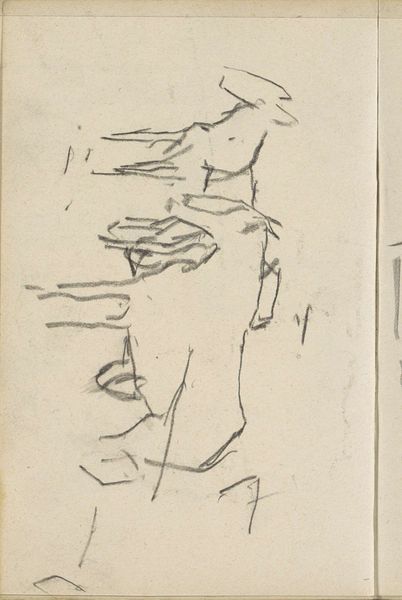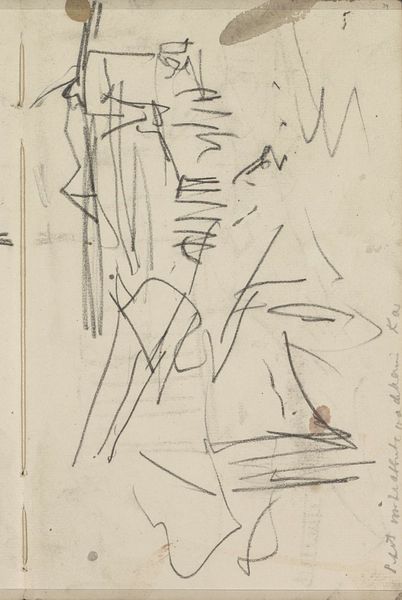
drawing, paper, pencil
#
drawing
#
comic strip sketch
#
paper
#
form
#
personal sketchbook
#
idea generation sketch
#
sketchwork
#
ink drawing experimentation
#
pen-ink sketch
#
pencil
#
abstraction
#
sketchbook drawing
#
storyboard and sketchbook work
#
sketchbook art
#
initial sketch
Dimensions: height 340 mm, width 266 mm
Copyright: Rijks Museum: Open Domain
Curator: We're looking at "Studies van roggen, met kleurnotities," or "Studies of Rays, with Color Notes," by Gerrit Willem Dijsselhof. It’s dated from 1876 to 1924 and held here at the Rijksmuseum. Editor: First impression? Restless. It's like peering into the artist's mind as he wrestles with form, scribbling these ghostly rays into existence. So much tentative energy here! Curator: Exactly! What grabs me is the tangible sense of process. You see the materiality so clearly—the tooth of the paper, the graphite or maybe ink, even the artist’s own annotations scribbled around the studies. Editor: Those little colour notes are fascinating. They’re whispers of the sea, hints of the vibrancy he saw, but they’re constrained within the black and white sketch. It’s almost like he’s fighting against the limitations of the medium itself. Curator: I think it goes further. Consider the economic context; drawing, and sketching like this, are often preparatory works, blueprints for other productions that may require different sets of resources. It raises the question of "preparatory for what?". What was Dijsselhof working towards? Or was the point, as suggested by the unrefined look and feel, to experiment in the moment? Editor: Maybe it was the sheer joy of observation. The feel of pencil on paper, the struggle to capture that ethereal, alien grace of a ray... that’s valuable in itself. The scribbles, the quick lines, the abstract form is full of motion. It feels more alive than a polished, finished piece could. Curator: It's also easy to consider from a socioeconomic position because paper, pencil and ink can be rather cheap, and with them one is free to consider forms like Dijsselhof. Editor: Absolutely. There’s an honesty here, a vulnerability that’s rare to find in more polished works. This feels like a glimpse behind the curtain, a secret shared between the artist and the viewer. Curator: The social history of these types of sketches, their place in the production, as well as how they are handled afterwards reveals the value judgements imposed in different environments of art production, reception and sales. It is definitely interesting to muse how time elevates "drafts". Editor: I'll take that sentiment! It’s wonderful to be reminded that art doesn't always need to be grand or complete to be moving. There is so much potential in a study like this, a sketch in becoming!
Comments
No comments
Be the first to comment and join the conversation on the ultimate creative platform.

